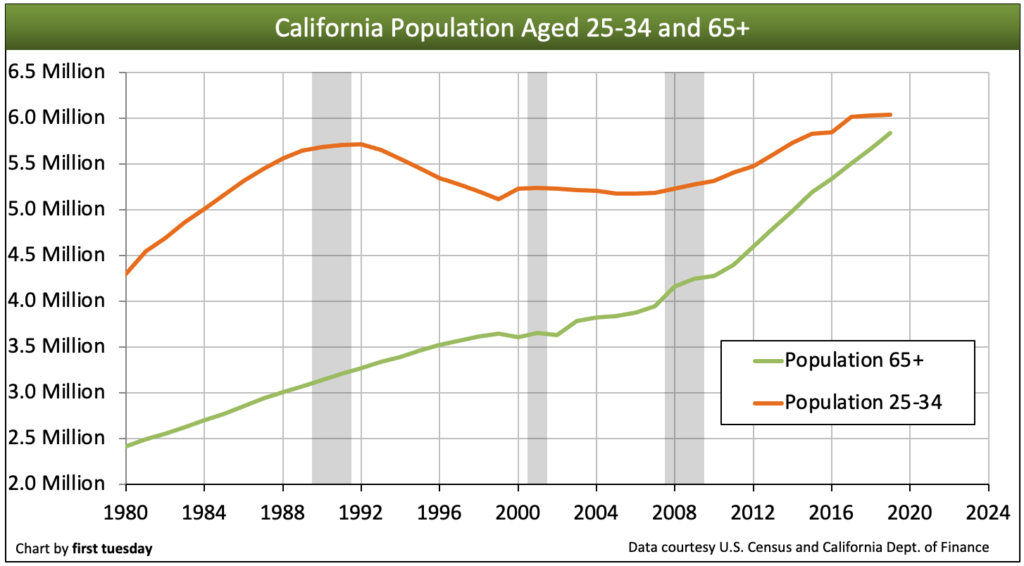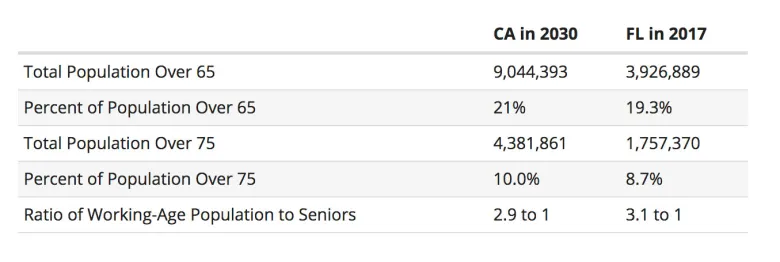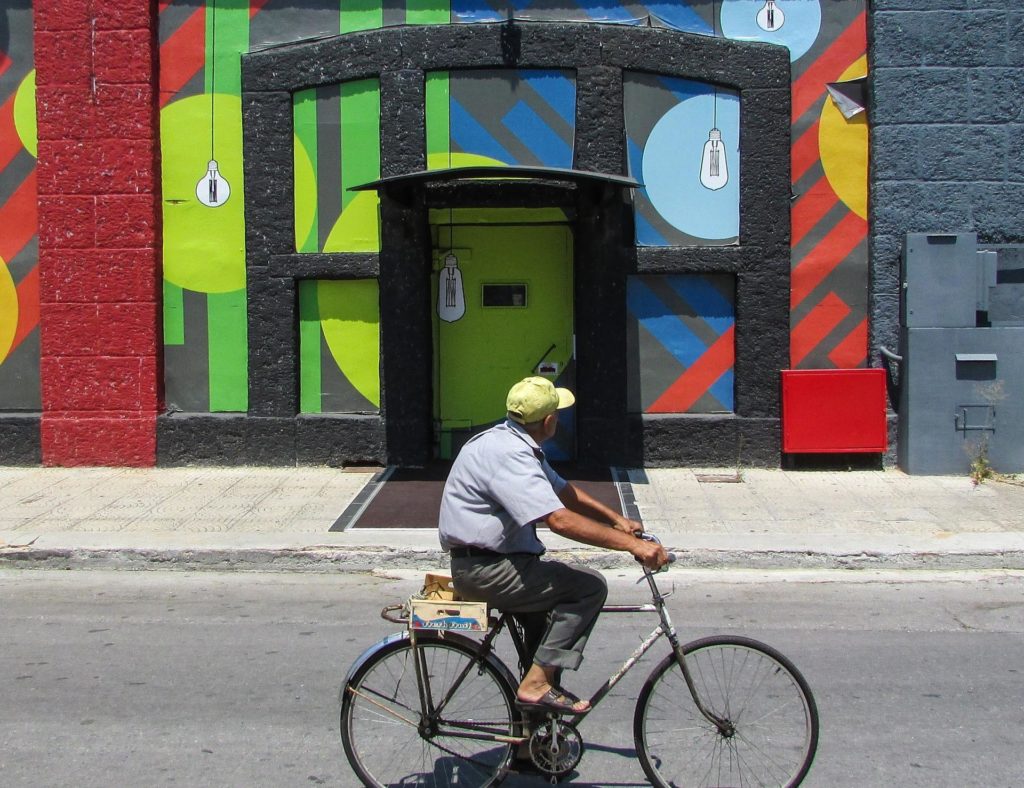California's Silver Tsunami Boom

California’s silver tsunami boom is here! Surf’s up! Within a decade, more than 20% of the state’s residents will be seniors. Older Californians are growing in numbers at nearly 15% of the state’s population in 2019. Nearly four-out-of-five Baby Boomers are homeowners today and will remain so in retirement. Some of these Boomers will sell and downsize, purchasing a replacement home of equal or lesser price, while many are expected to relocate from the suburbs to more convenient city-living. Near the age of 65, the majority of Californians stop working full time and begin capitalizing on the benefits of social security, Medicare and savings. The decision to retire is often swiftly followed by a series of lifestyle changes as retirees take advantage of their newly-increased liberty and accumulated financial power. One of the most significant changes is the sale of the retiree’s current home and the corresponding move to a new, more compact and centralized residence closer to family. In the coming years California’s senior population will continue to exert increasing influence over both the housing market and the California economy. California residents 65-75 are more likely to own property than any other age group. The accumulated equity in their homes, combined with savings allows them to exert a disproportionately strong influence upon the statewide housing market. As more continue to retire, every aspect of the state’s economy will change. The Boomers, the largest age group behind Generation Y in California, have spent the last 30 years accumulating their wealth usually in through equities generally living in large, suburban single family homes. Homeowners in California statistically do not tend to rent upon retirement. In fact, homeownership for those aged 75 and older remains 10% higher than for any age group under 50. Moreover, the percentage of citizens owning homes over the age of 75 grew even through the recession, and is currently near its highest level since 2002. Retirees have traditionally moved to smaller, more conveniently-located properties that are closer to urban centers.

The U.S. Census Bureau reported in 2014 that approximately 12% of the population in California’s metropolitan areas is 65 or older. As more senior citizens retire, interest in condos and other high-density residences that cater to the urban lifestyle will increase. The vast majority of retirees will continue to pursue some form of traditional ownership. The U.S. Census Bureau reports 50% of senior citizens who relocate choose to move to a new residence within the same community. In the industry we call that a neighborhood change and as Senior Real Estate Specialists we are qualified within the specialization to be most effective towards this transition. As the last of the baby boom generation enters the golden years of their California dream, seniors are the state’s fastest-growing age group, far outpacing growth in children or working-age adults. According to state projections, by 2030 more than 9 million Californians will be over the age of 65, 3 million more than there are today. Within a decade, more than 20% of the state’s residents will be seniors, which is a higher proportion than currently resides in Florida, a state famous for its large population of snowbird retirees. California’s impending “silver tsunami” is bound to impact nearly all walks of life, from health care to transportation to housing. Here’s what you need to know about our senior population: who they are, where they live, and what they mean for the future of life in California.
Baby Boomers

In comparison to other parts of the country, Californians are still pretty young. The statewide median age in 2017 ticked up to just over 36, according to the U.S. Census. That makes California one of the 10 youngest states in the country. By comparison, Florida’s median age is 42. But the state’s sheer size means California’s senior population is massive. Nearly 6 million Californians are over the age of 65! That is more senior citizens than the entire population of Oregon. If Californians over the age of 80 formed their own state its population would warrant more congressional representatives than Delaware has now. While California’s senior population is large now, just wait a couple decades. While California’s working-age population is projected to grow by about 6% by the mid-2030s, California’s 65-plus population will grow by more than 65%. Over the same time period, the number of Californians younger than 18 is actually expected to dip slightly. When U.S. veterans returned from World War II and began the procreation frenzy known as the baby boom, California was one of their favorite destinations to raise kids. Born between 1945 and the early 1960s, the youngest members of this generation are now entering retirement age while the oldest are already in their 70s. While aging boomers are by no means a uniquely California phenomenon, people in their 50s and 60s here tend to be healthier and have longer life expectancies than in other parts of the country.

Despite increases in living costs, baby boomers don’t seem to be leaving California in the numbers you might expect. While some are fleeing to more affordable places like Nevada and Arizona, the vast majority are spending their golden years in the Golden State. While the most common living arrangement for seniors is still to cohabitate with a spouse, about 36% of women and 20% of men over 65 currently live alone, according to Census data. Assisted living facilities, housing communities that can provide daily living assistance to seniors outside of a medical setting are pretty popular in California. But only 2% of California seniors live in nursing homes facilities in a medical setting. Geographically, the senior population in California is roughly distributed the same way as the rest of the state: two-thirds live in major coastal population centers like the Bay Area and Los Angeles. Over the next few decades, the largest increases are expected to come in Central Valley and Inland Empire counties like Sacramento and San Bernardino, according to the state Department of Finance. Almost 4.3 million seniors are licensed to drive on California roads, with well over 1 million aged 75 or older, according to data compiled by the Federal Highway Administration. Three of every four California seniors has a driver’s license. The typical California senior has an income of about $25,000 per year, according to data from the American Community Survey. That’s about $10,000 less than your average working-age Californian. That obviously isn’t much, especially in a state as expensive as California. About 30% of seniors don’t have enough income to cover basic needs. Where is that income coming from? Most commonly, Social Security. Two out of every three California seniors get a majority of their income from the federal retirement program, according to a UC Berkeley study. Less than half of senior-headed households get retirement income from a pension, 401k or IRA. About 20% of Californians over 65 are still in the labor force. The good news is that more than 70% of Californians over the age of 60 are homeowners, according to U.S. Census data. Those seniors are typically faring far better economically than older California renters. One UCLA study found that more than half of low-income senior renters spent more than 50% of their income on rent. Proposition 13, the 1978 initiative that capped property taxes, enables many California seniors to age in place more easily. According to estimates from the nonpartisan state Legislative Analyst’s Office, Californians turning 65 right now can expect to spend about 20% of their remaining years with a major disability, something that interferes with a basic activity like eating, dressing or going to the bathroom. Women will spend more years with major physical limitations, simply because they are more likely to live into their 80s and 90s. The number of California seniors who have difficulty caring for themselves will double to more than 1 million by 2030, according to the Public Policy Institute of California.

The California silver tsunami boom is here! The state is already starting to see the consequences of an aging population living outside institutionalized care. According to data from the state’s Office of Statewide Health Planning and Development, the number of visits to California emergency rooms by seniors from falling accidents increased almost 40% from 2010 to 2015. State-funded in-home supportive services for the elderly and disabled now cost about $4 billion per year, and are expected to grow 11% annually making the program one of the fastest-growing and costliest in the state, according to the state Legislative Analyst’s Office.Gov. Gavin Newsom called for a “Master Plan on Aging” to prepare the state for the demographic challenges ahead. The state’s current patchwork of programs to provide senior services — especially long term health care — is routinely criticized as underfunded, fragmented and difficult to navigate.
Reach Out To Speak With A California Real Estate Specialist
Our areas of commitment to our clients and families begin with listening to your story. This stage of life can be complex and highly emotional. We know how to simplify things and support you every step of the way. We share with you your options based on over a decade of experience and commitment to our clients. Through the process we’re able to figure out what makes the most sense for you. We don’t lose sight that this process is all about you and what’s best for you. For adults ages fifty and over the often complex process of preparing and selling real estate can be made more difficult due to physical and financial limitations, and the strong emotions connected to your family home.